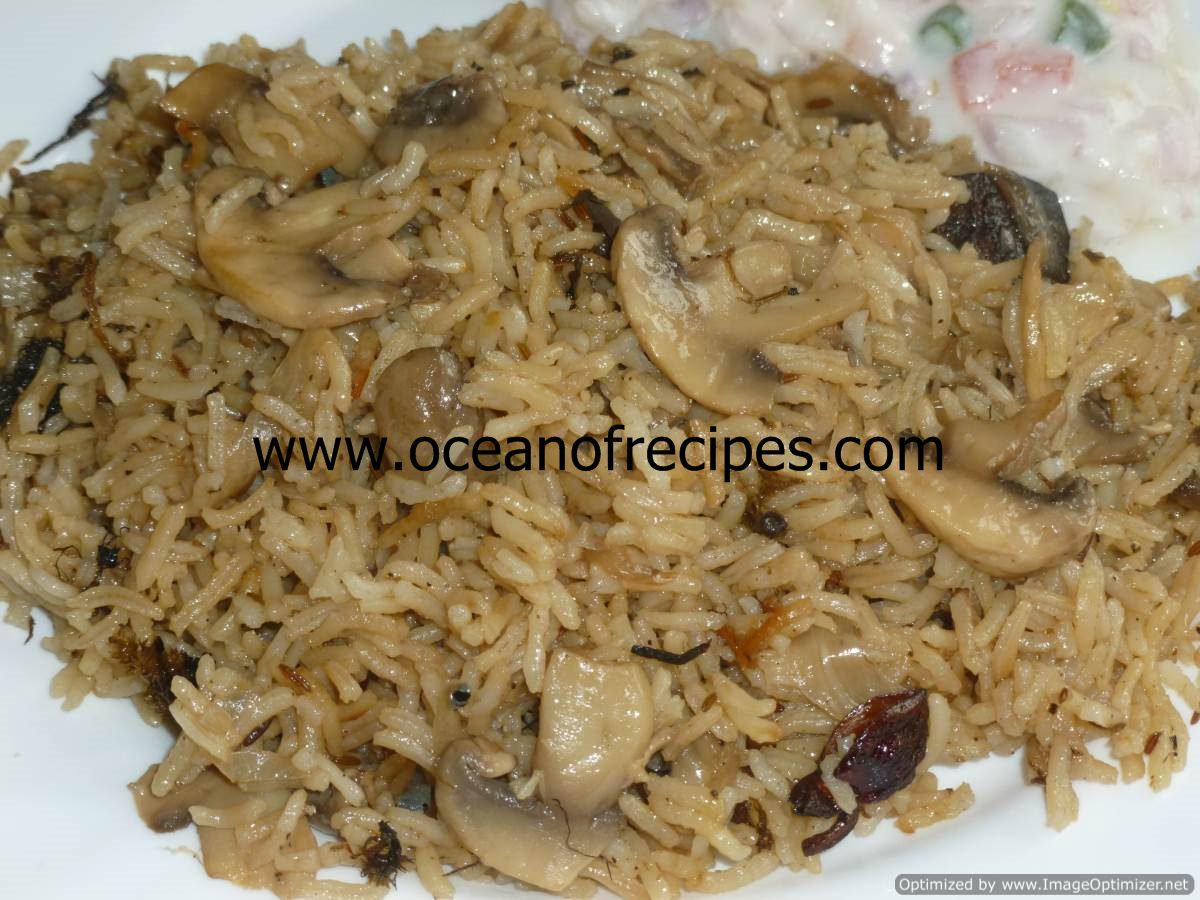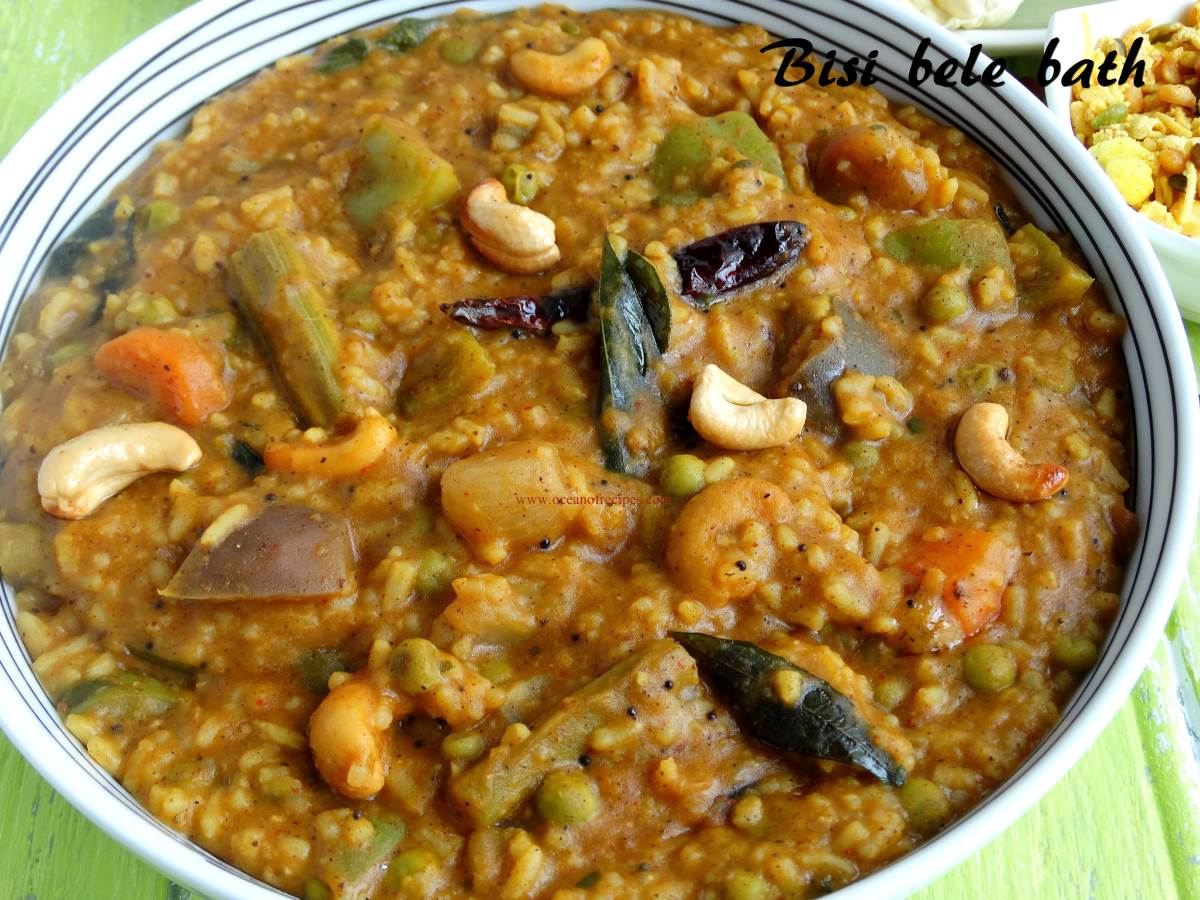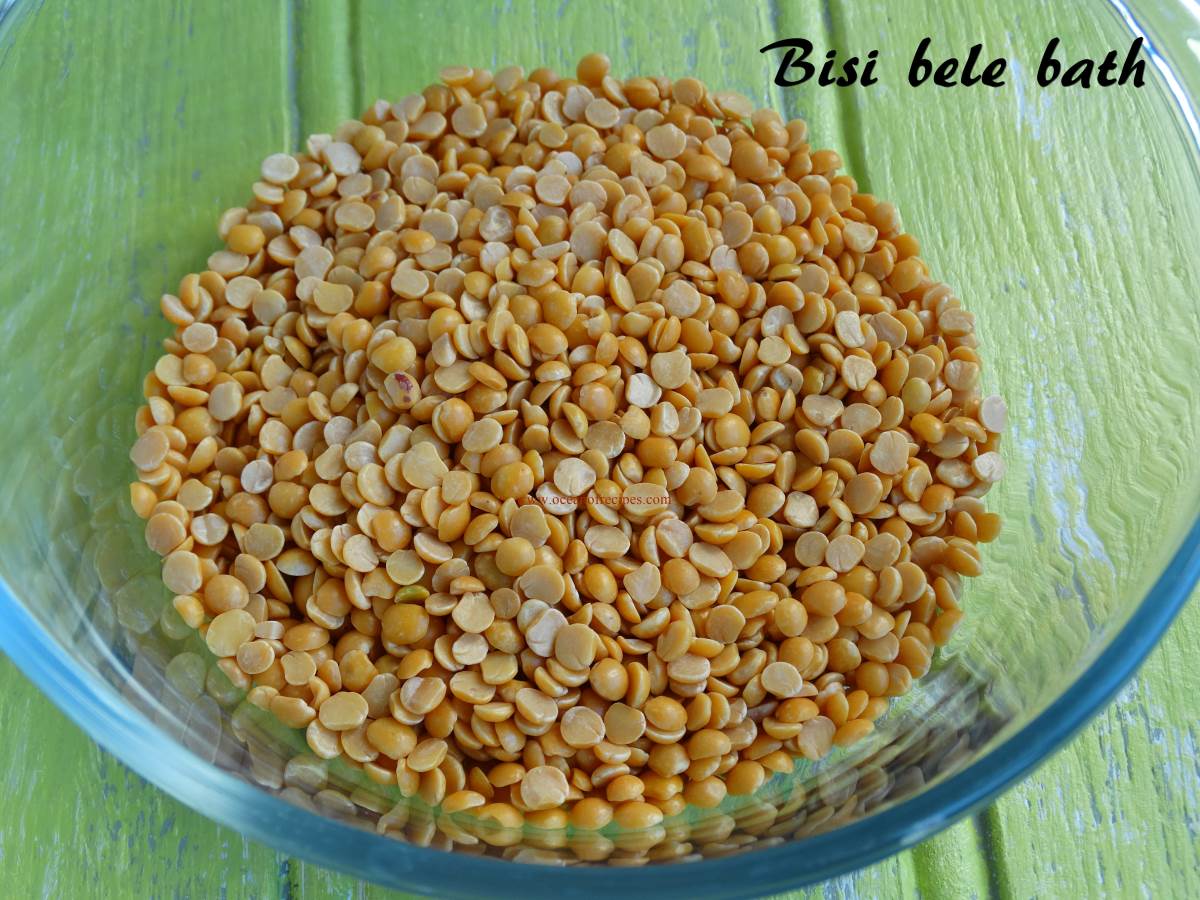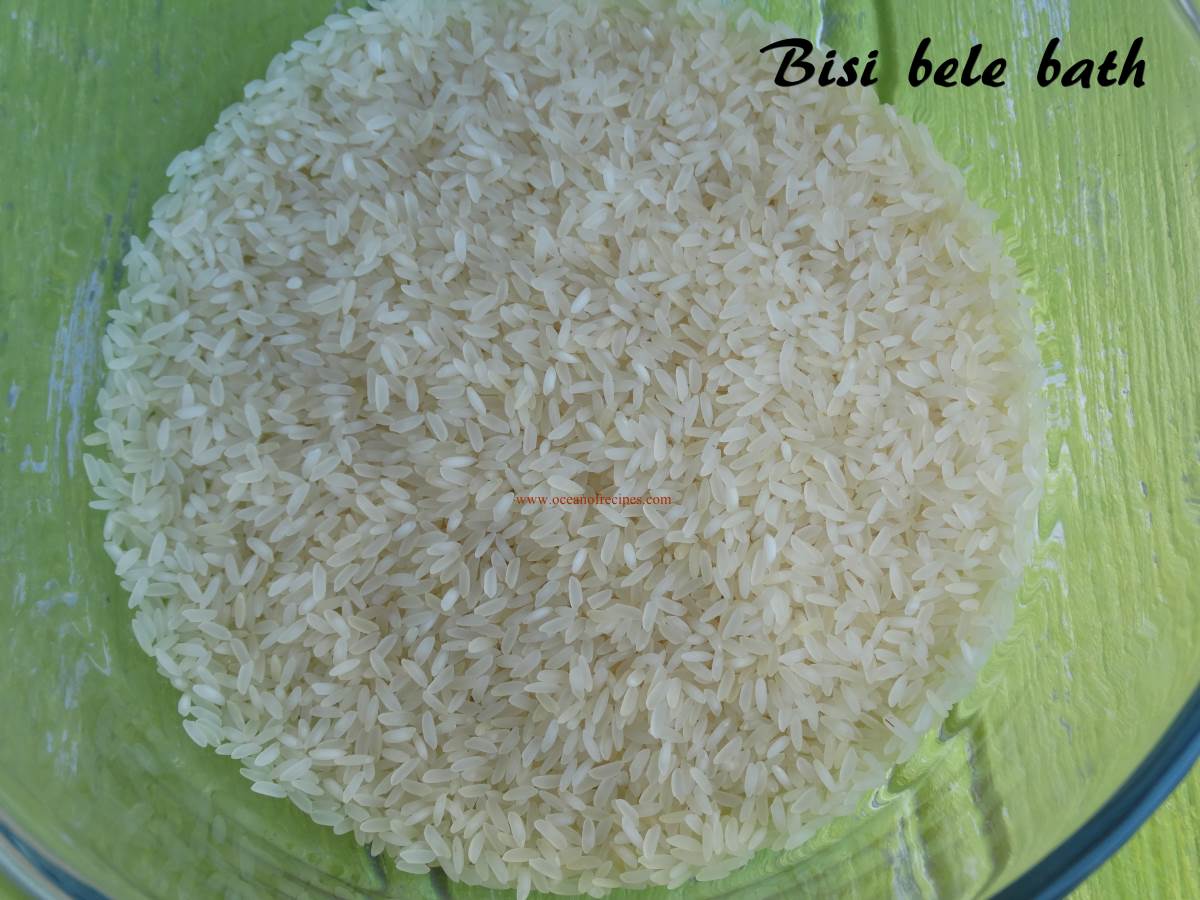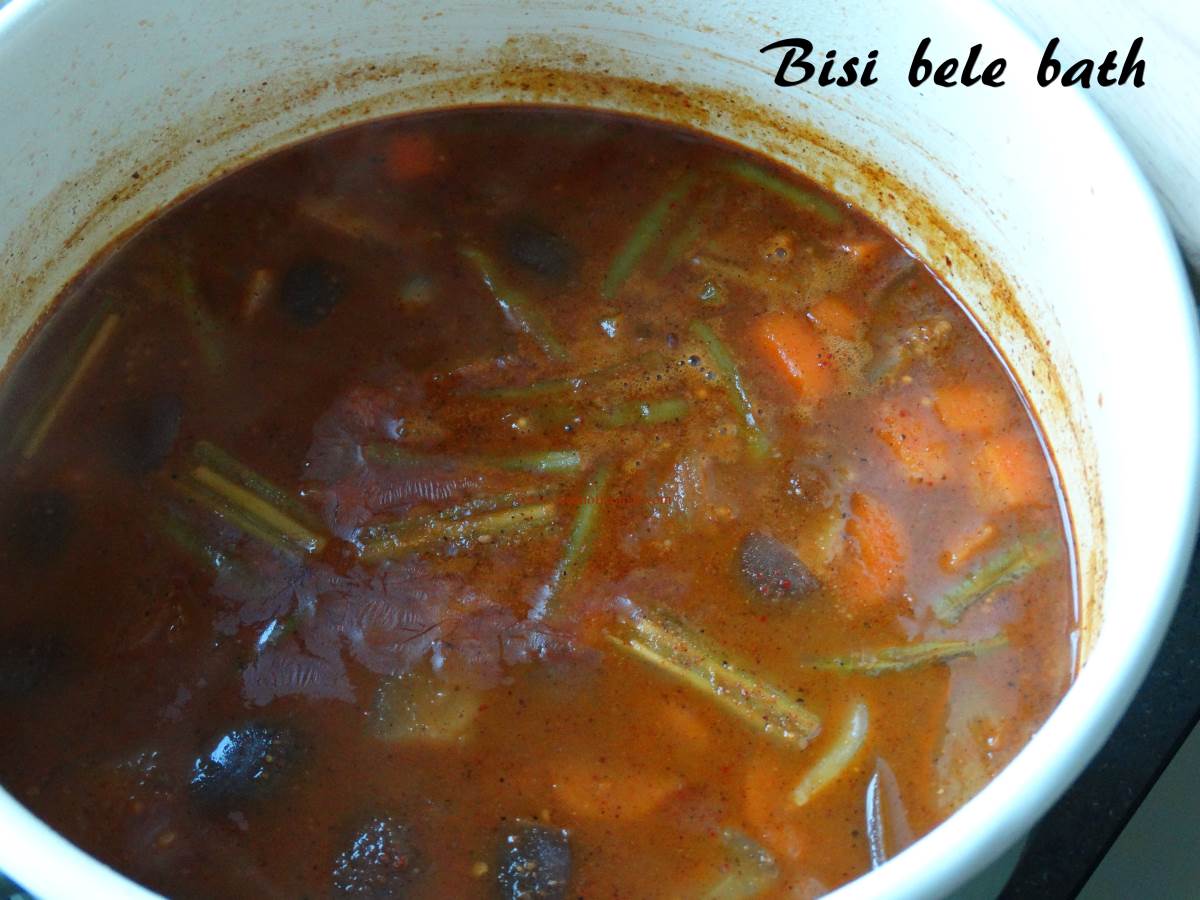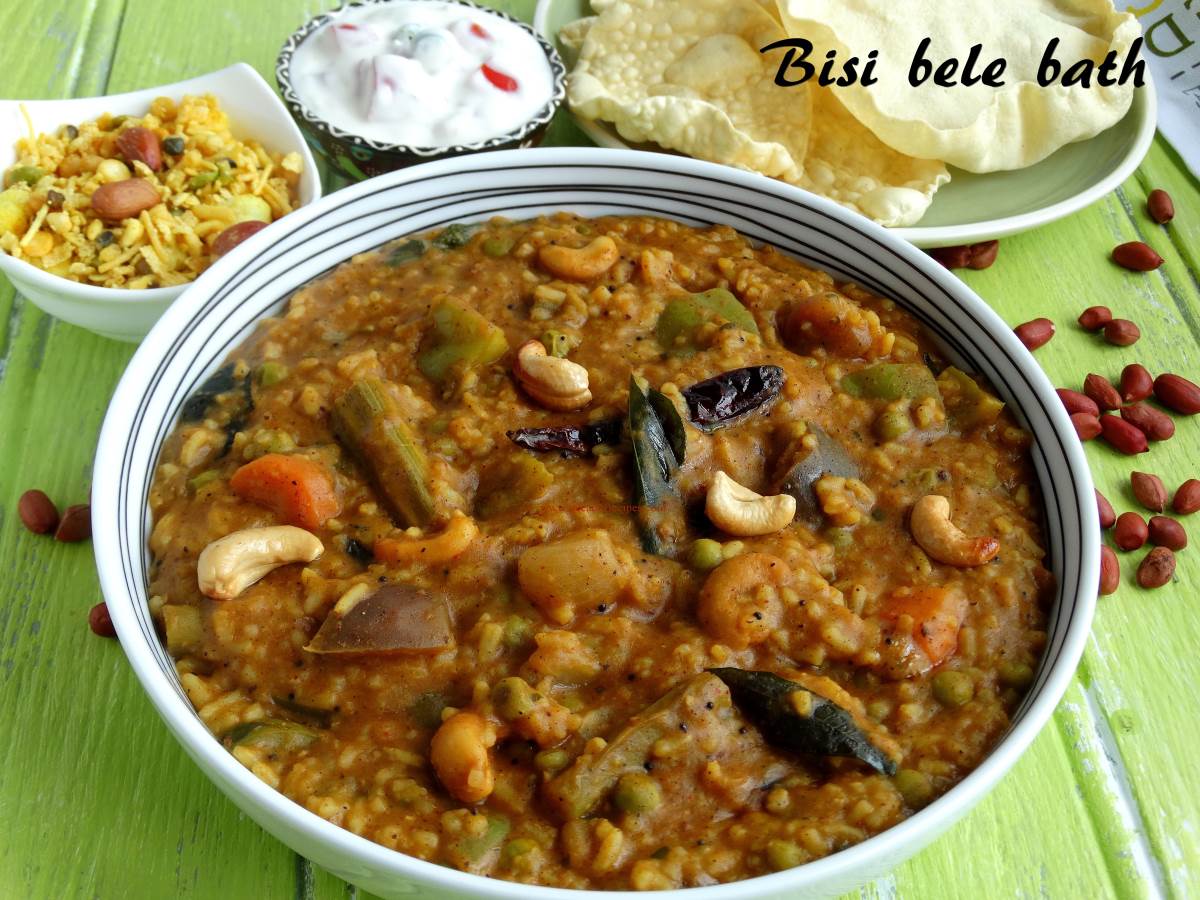Bisi bele bath is very famous in Karnataka for one pot vegetarian rice dish. Bisi bele bath in Kannada means hot lentil rice. Bisi means hot, bele means lentil or dal, bath means a dish made of rice. This dish is a blend of dal and rice with freshly roasted spices and vegetables. In restaurants and at home, everyone prepares Bisi bele bath with freshly ground masala or readymade store bought. In rice dish, bisi bele bath is one of my favourite dishes because of its taste and aroma.
Bisi bele bath is similar to sambar rice. The only difference is in the masala. For both, freshly ground spices masala is prepared but different ingredients go in apart from khus-khus (poppy seeds) and the dry coconut (copra), which is used in the bisi bele bath but not in sambar rice. One important ingredient that I have added in this is Marathi mogu (badi laung), which is added in bisi bele bath. In Karnataka, you get byadgi dry red chillies, which gives good colour, I have used Kashmir chillies instead. In Chennai, it is known popularly as sambar rice. I used to have this dish only in restaurants, but one of my friends was kind enough to share this recipe. From that time I am preparing Bisi bele bath as per my taste.
Preparation time: 15 mins (excluding soaking time)
Cooking time: 45 mins
Cuisine: Karnataka
Spiciness: Medium
Serves: 4
Rice/p<>
Lentils or dal
Vegetables
Bisi bele bath powder/ dry roast powder
Tadka / Tempering
There are 4 steps to make bisibelebath
a. Cooking the rice and lentil
b. Cooking the vegetables with masala powder
c. Combining rice, lentil and vegetables
d. Tempering with ghee
Cooking the rice and lentil
Roast the spices (Bisi bele bath Masala/powder)
Cooking the vegetables with masala powder (Bisi bele bath powder)
Combining rice and dal
Tempering



